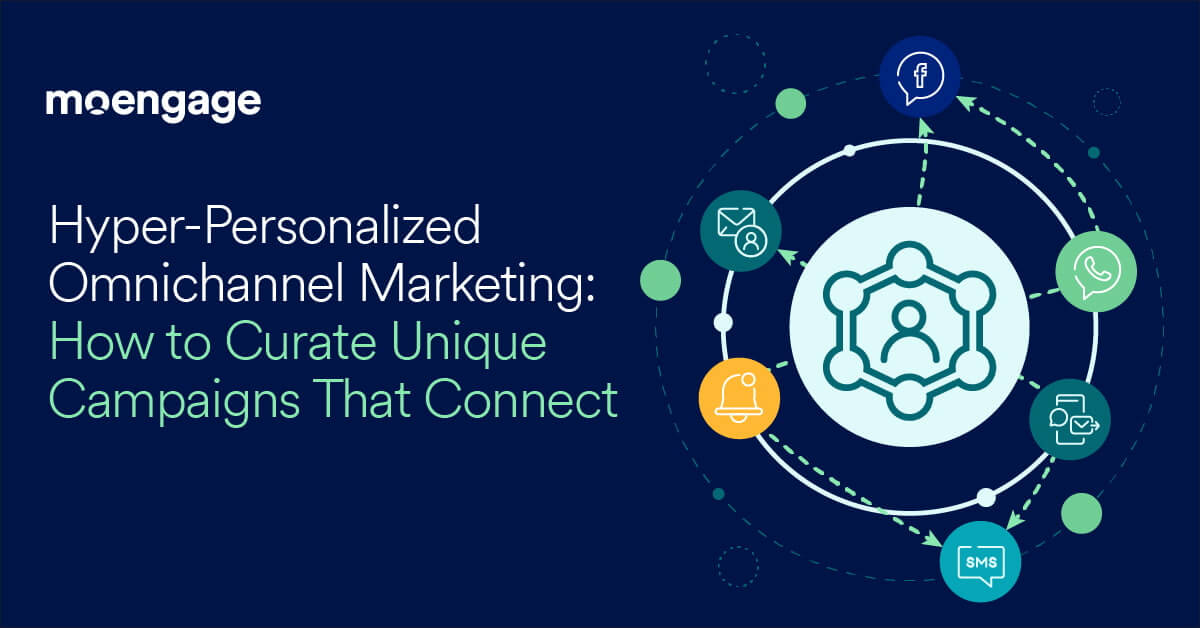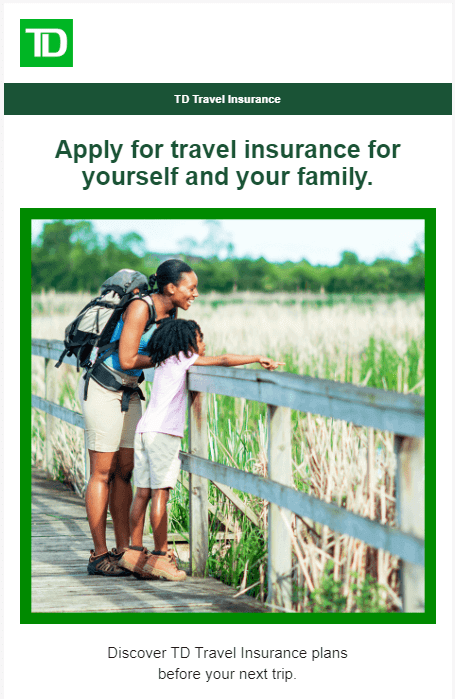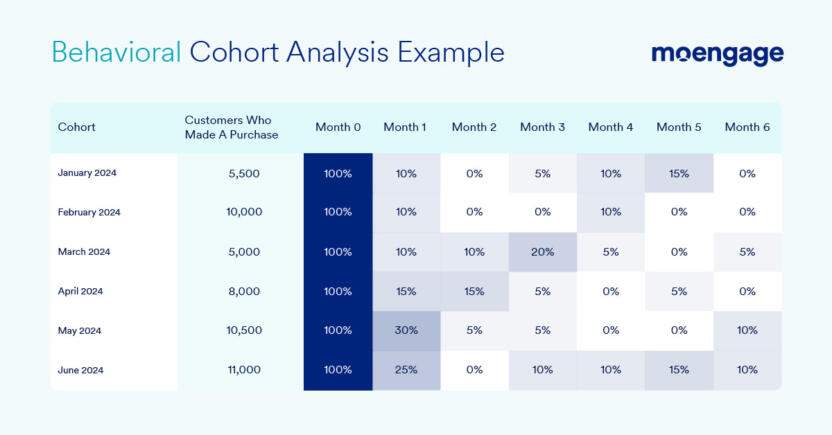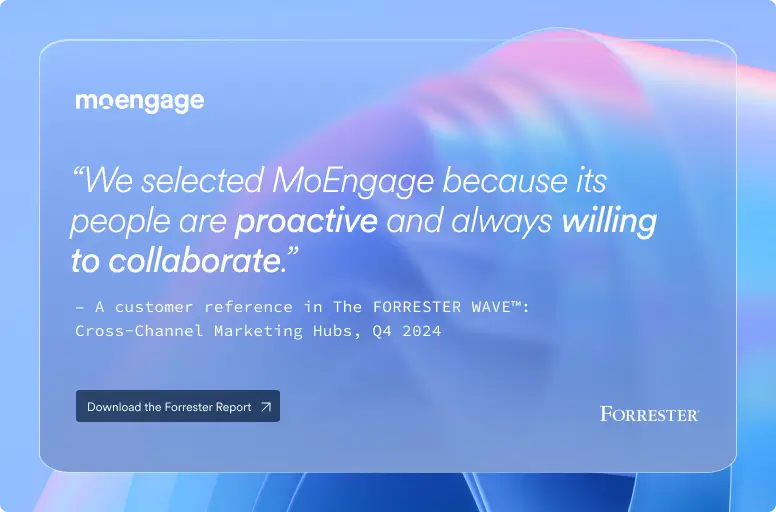Hyper-Personalized Omnichannel Marketing: How to Curate Campaigns That Connect

Omnichannel personalization is more important than ever in today’s convenience-centered digital landscape.
According to our Personalization Pulse Check 2023, 56% of North American consumers expect a curated shopping experience from the brands they shop from regularly, and 76% of NA consumers claimed that receiving personalized communication was a deciding factor when considering a brand.
That being said, according to a recent report by Deloitte, Connecting with meaning: Hyper-personalizing the customer experience using data, analytics, and AI, 75% of consumers said that brands send them too many email promotions, and 69% said they’ve unfollowed a brand on social media.
What does all of this mean for brand marketers?
To really satisfy customers and build (rather than) damage your relationship, you need to provide the right messaging at the right time. It’s not about inundating your users with a content and marketing barrage; it’s about delivering the most impactful messages at the optimal moment for the best traction. And if you can do that effectively, you can keep customers satisfied while increasing engagement and driving conversions.
To help you do just that, we cover the following:
- What is hyper-personalized omnichannel marketing?
- Three Omnichannel personalization examples to improve customer engagement
- How to build a personalized omnichannel marketing strategy
Let’s start by exploring exactly what we mean by hyper-personalized omnichannel marketing.
What is Hyper-Personalized Omnichannel Marketing?
Hyper-personalized omnichannel marketing is a strategy that combines omnichannel marketing with one-to-one marketing personalization. The goal is to provide an enhanced customer experience that maximizes engagement, retention, and conversions.
For a strategy to be hyper-personalized and omnichannel, it has to have both these elements.

First, the strategy needs to be omnichannel, with all channels working in unison to provide a seamless, interconnected experience for customers. Unlike a multichannel strategy, where each channel operates independently, an omnichannel approach ensures all touchpoints are interconnected and provides a unified experience to customers.
Second, the strategy has to be hyper-personalized, providing content, advertising, and an overall experience that is customized to the individual user’s unique preferences and behavior. These experiences go beyond traditional personalized marketing that deliver content to customer segments and instead offers 1-to-1 personalization.
Personalized marketing involves leveraging demographic data, basic customer attributes, and past activity to better understand — and connect with — customers based on segmentation. Hyper-personalization goes a step further, drilling down on unique customer details and behavior that enable you to market directly to individual customers.
Where personalization allows teams to make geographically-based brand recommendations, hyper-personalization empowers teams to also deliver uniquely customized and contextually relevant recommendations based on real-time customer behavior.
Three Omnichannel Personalization Examples to Improve Customer Engagement
Piecing these two strategies together makes for a complex marketing strategy that is challenging to perfect; however, when done right, it can yield incredible results.
We explore examples from marketing giants in Retail and Ecommerce, quick service restaurants (QSR), and financial services industries to show you how some of the best brands achieve personalized omnichannel marketing success. We’ll also explain how their campaign is both omnichannel and hyper-personalized.
Ideally, the following examples will help you better understand how leading competitors leverage and execute hyper-personalized strategies so you can implement one yourself.
1. Amazon provides hyper-focused product recommendations in real-time

Amazon is a shining example of a finely-tuned and perfectly executed hyper-personalized omnichannel strategy. Customer behavior is tracked no matter what touchpoint they use, so that Amazon can serve relevant product recommendations no matter where the user shops next.
If a customer browses via the website, and later signs on via their mobile device, not only will the experience be the same, Amazon will leverage that website interaction to recommend products the customer has most recently searched for (no matter which device they searched on).
This enables Amazon to recommend similar and related products in-app or on the web while the customer is browsing in real-time, intuitively creating bundles of items that are frequently bought together as the customer shops. It also empowers them to create highly customized and focused retargeting and abandonment campaigns that don’t just get customers back, but also promote cross-selling opportunities.
All of this is made possible by detailed purchase history and user behavior data that allows Amazon to truly understand what individual customers want. But they do an incredible job of translating that data into meaningful marketing campaigns that drive engagement and conversions.
2. DoorDash delivers geographically and contextually relevant restaurant recommendations

DoorDash doesn’t just offer local recommendations based on the customer’s location, they also personalize these recommendations based on each individual customers’ preferences and past behavior to better serve them restaurant recommendations.
When searching from a hotel, the app will recommend restaurants that are fastest near you (in the event you’re on-the-run and need food quickly) and new restaurants you haven’t tried (so you can explore the area and try the local food). A push notification alerts you at the optimal time — shortly before you’re likely to need a meal.
These recommendations aren’t just based on the segment you belong to, they’re based on your individual past behavior, as they account for restaurants you’ve previously visited in real-time or the current delivery speed of restaurants that are open.
3. TD Bank perfects contextually relevant marketing messaging to create cross-selling opportunities

TD Bank employs an incredibly interwoven omnichannel experience that is hyper-personalized to the customers’ actual behavior. When a customer books a flight via a credit card linked to a TD account, an email is triggered that offers the customer TD Travel Insurance for their upcoming travel.
Not only is this a great cross-selling opportunity, but it’s also a better overall experience for the customer. By interweaving a cross-selling opportunity into a streamlined experience, you’re satisfying your customer and improving your chances of a conversion.
How to Build a Personalized Omnichannel Marketing Strategy
Personalized omnichannel marketing is by no means easy, it requires strategic planning and on-point execution. But, when done effectively, it delivers incredible results that drive engagement, retention, conversions, and revenue.
When you can perfect a hyper-personalized omnichannel marketing strategy that’s focused on delivering the best-in-class customer experience, you can maximize the value of each customer by increasing average order value, customer lifetime value, and overall revenue.
Let’s look at how to build a successful and sustainable personalized hyper-personalized omnichannel marketing strategy.
Step 1: Unify customer data for deeper insights
The foundation of any hyper-personalized, omnichannel marketing strategy is accurate, reliable data. Without it, you’ll never have a chance of success.
Unifying your consumer data allows you to develop a holistic picture of customer behavior that allows you to understand your customers on a granular level. Collect, consolidate, and amalgamate data for deep insights that help you perfect your overall strategy and individual marketing campaigns.
Audit your process regularly, considering what types of data can be added to this process.
Step 2: Segment customers and develop buyer personas
While customer segmentation isn’t enough to deliver hyper-personalized customer experiences, it’s still the backbone of the entire personalization process.
Customer segmentation allows you to develop common buyer personas, identify audience segments, and curate targeted marketing campaigns. It’s a core element of any personalized marketing strategy, and it’s an essential building block of a hyper-personalized approach.
From here, you can drill down on individual customers to provide one-to-one personalization that delivers each customer a unique experience.
Step 3: Conduct cohort analysis to understand customer retention
Customer segmentation breaks customers down by unique character and behavioral traits, but it doesn’t account for the stage customers are in the natural lifecycle. That’s where cohort analysis comes in.
With effective cohort analysis, companies can analyze users that share common characteristics over a specified period of time. This allows teams to see patterns clearly across different stages of the customer lifecycle, as opposed to bundling all customers together and treating them as though they should be at the same stage.

Cohort analysis is extremely useful for predicting future buyer behavior and anticipating churn. Companies should look at common buyer activity, such as time between orders, repeat purchases, orders per customer, and average order value, as well as other behavioral activities that could be used to better understand buying behavior.
Step 4: Identify and map out all potential customer journeys
At this point, you’re going to want to dive into building your strategy, but that’s not the next step. First, you want to consider all potential journey pathways your customers can take from their first interaction with your brand all the way through to repeat buyers.
Despite what you view as your ideal conversion funnel, different customer segments (and each individual user) will take different purchase pathways, and it’s important to understand each of these. Make sure you are open-minded about all of the potential paths customers can take, and then put critical thought into which customer segments are more likely to use which pathways. Then validate these hypotheses with data whenever possible.
Once you’ve identified the different customer journeys users take, think critically about how you can leverage an omnichannel strategy and hyper-personalization to maximize engagement at the most optimal points in each customer journey.
Step 5: Establish your personalized omnichannel marketing strategy
Now you’re ready to really define and establish your personalized omnichannel marketing strategy.
Outline the overall objectives of your strategy, what tactics you’ll employ, and what types of personalization you’ll be using to gain traction with your customers. Develop a clear roadmap and path to get there, and then make sure you constantly use this plan to guide your efforts (while allowing some flexibility to adapt to changes).
Set measurable goals that allow you to analyze performance and identify areas of improvement, and build your strategy around these goals and KPIs. Clearly define your strategy, and ensure that it underpins all of your efforts moving forward.
Step 6: Choose the channels you’ll use to connect with customers
With an overall strategy guiding your process, it’s now time to select the channels you’ll use for your omnichannel strategy.
It’s vital that you base these decisions on what your customers want. Think back to the customer journeys you mapped out, and think critically about which channels allow you the best means of interacting with customers throughout their journey. The goal is to nurture the customer and motivate them to proceed further down the funnel without adding friction.
Don’t just think about which channels are popular, think about which channels give you the best opportunities to truly connect with your customers in a way that resonates with them. Ponder how you’ll use each channel within your strategy, from web, to mobile, to email, and more. Make sure all channels are integrated and aligned so they’re all working towards the same goal — driving engagement, conversions, and loyalty.
Step 7: Orchestrate personalized customer experiences
Now that you have a strategy in place that allows you to tap into what your customers want, you can begin to build end-to-end experiences that allow you to deliver that experience to them. Guided by deep data and insights, you’ll be able to optimize the experience at each touch point for maximum engagement.
Create uniquely personalized experiences for users, from dynamic content to dynamic messaging that are contextually relevant. Real-time Smart Triggers allow you to streamline a user’s journey and help keep customers on the path of least resistance, motivating them to complete a sale (and return to complete more!).
Step 8: Create personalized content and marketing materials
Now that you’ve developed and defined your strategy, chosen your channels, and curated customized customer journeys, it’s time to create personalized content that will fill your marketing materials — and resonate with your customers.
Now’s the time to get creative. Do your best to hone in on what fuels your different customer segments and, whenever possible, individual customers. Then develop unique marketing materials and messages that speak directly to them. Curate conversion funnels designed to maximize the engagement of each customer.
Try a variety of different messaging tactics, and A/B test to see which channels, content, and times work best. Double down on what works and avoid what doesn’t, replacing it with a new strategy to test. Over time, you can refine your strategy to get the most value from your operations.
Step 9: Automate marketing at scale to optimize your growth potential
Now that you’re effectively conducting a hyper-personalized omnichannel marketing strategy, it’s time to optimize your operation so you can effectively scale as you grow. Employ marketing automation to eliminate manual, time-consuming tasks for your teams.
Use AI-driven optimization to squeeze the most value out of your marketing efforts, improving your strategy for better results. This will not only free up time for your team to focus on priority tasks, but it will also help you scale as you grow.
Deploy Hyper-Personalized Omnichannel Marketing Campaigns with MoEngage
At its core, a hyper-personalized omnichannel marketing strategy is all about placing the customer at the center of the experience. As a B2C marketer, it’s your job to curate a customized experience built specifically around their unique needs. In the end, this level of attention to detail increases customer satisfaction, engagement, and retention.
MoEngage leverages deep data to extract meaningful insights that let you truly understand your customers’ behavior and desires. Create an omnichannel strategy that integrates all channels for a smooth, seamless experience for customers no matter the touchpoint they use to interact with your brand.
Using customer segmentation as a base, dig even deeper into unique customer behavior and activity to offer hyper-personalized product recommendations, content, messages, and offers.
And you don’t have to stop there. Our enterprise-ready Customer Engagement Platform is designed to help you get more traction with customers and maximize engagement.
Schedule a demo to learn how we can help your team get more value out of hyper-personalized customer experiences and marketing campaigns.













